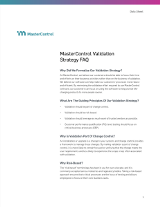
GxP Lifeline
Using Connected Quality to Track Down Problems
 Mistakes are inevitable in any process. The problem is making sure those mistakes aren’t repeated and that any underlying issues are resolved. Regulations and standards require companies to have procedures in place for quality event management. Even if they didn’t, it’s just good business sense to find your company’s weaknesses and try to fix them. To do this, you need good systems in place for detecting problems, the severity of problems, determining a solution, and implementing that solution.
Mistakes are inevitable in any process. The problem is making sure those mistakes aren’t repeated and that any underlying issues are resolved. Regulations and standards require companies to have procedures in place for quality event management. Even if they didn’t, it’s just good business sense to find your company’s weaknesses and try to fix them. To do this, you need good systems in place for detecting problems, the severity of problems, determining a solution, and implementing that solution.
In the quality world, those problems come in the form of complaints, deviations, out of specifications, etc. and can lead to corrective and preventive action (CAPA). Combining that data, reducing CAPA and making CAPA easier are major benefits of MasterControl’s next generation of products. During Virtual Masters Summit 2020, we’ll be talking about what this will look like for our customers.
Uniting Quality Events
It’s hard to see the root cause of a quality event when you can’t even see the big picture. This problem can be attributed to antiquated systems for compiling quality events which aren’t interconnected. If the same root cause caused multiple quality events, the average quality management system (QMS) wouldn’t be able to point that out. A person reading through the data might realize the connection, but this is hardly practicable. This is one situation in which artificial intelligence (AI) would allow companies to improve and regain some time they would normally lose in manually tracking and trending.
What does this look like in common practice? It gives quality managers a holistic view of all quality events and lets them see their company’s progress over time. Natural language processing (NLP) can be used to determine which complaints are connected and how they’re related to other quality events. Having many complaints related to a single deviation on a single line is a very different problem from many complaints related to multiple lines due to a CAPA that hasn’t been closed. Having an application that can tell the difference is vital.
When to Open a CAPA
Uniting quality events can also give quality managers a good idea as to whether to initiate a CAPA. Starting a CAPA for every quality event leads to death by CAPA. So, how do you know when to start one?
“To CAPA or not to CAPA, that is the question / Whether ‘tis nobler for the quality department to suffer / The forms and tracking of demanding procedures, / Or to close the incident after issue review / And by reviewing end it.”
Rather than breaking into a soliloquy every time this decision needs to be made, quality managers can once again rely on AI and NLP. The frequency of the quality event is a good indicator as to whether a CAPA should be opened. With these new solutions, that data will be automatically collected and easily reviewable. Any new issues can automatically be compared to historic ones. For example, the system can tell you that the newest customer complaint is due to a deviation and you’ve already implemented corrective action for it.
Anti-Aging on CAPA
People are terrified of aging. The idea of wrinkles, gray hair and weakening bodies keeps people up at night. Aging CAPAs are what keep quality managers up at night. A big contributor to death by CAPA is the fact that so many CAPAs are ongoing. An overview of how many CAPAs a company has and where they are in the process is something missing from the typical QMS. This leads to CAPAs being months overdue in some cases and keeps employees from being proactive if they have a CAPA that’s about to become overdue.
CAPAs can easily slide past their due date when there’s no automated way of tracking the moving parts that go into each CAPA. Dashboards can offer users quick insights into where in the process each CAPA is, how many CAPAs are overdue, and how many will soon be overdue. This lets quality managers quickly ascertain where to focus their efforts and lets them work to move CAPAs forward before they become overdue.
Conclusion
As with any quality process, a digital connected solution can revolutionize quality event management. Recent advances in AI and NLP can make quality managers’ lives easier by consolidating data and helping them manage their quality events. When quality managers don’t have to spend their time exporting data to Excel and manually compiling it, they have time to focus on more value-added activities. This takes quality from a mostly compliance-driven department to one that adds business value.
We’ll be telling our customers more about the importance of AI and machine learning in the next iteration of MasterControl products at Virtual Masters Summit 2020.

